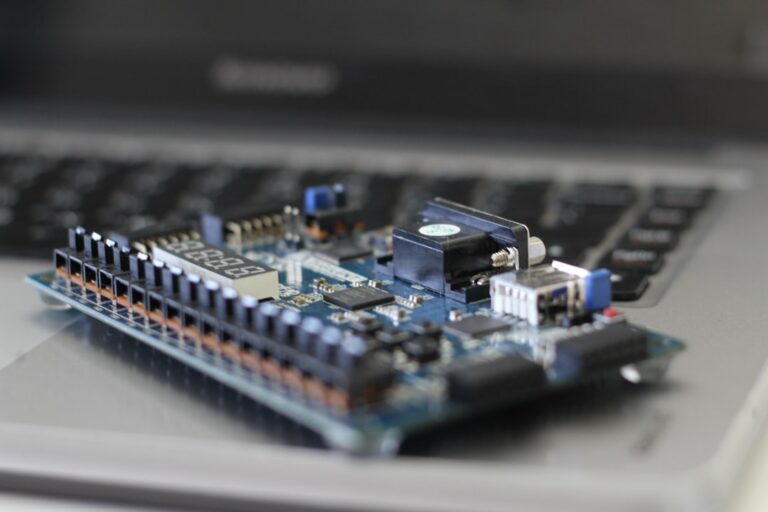Hypervisor technology serves as a critical component in the realm of virtualization, enabling multiple operating systems to run concurrently on a single physical machine. At its core, a hypervisor is a software layer that abstracts the hardware resources of a host machine, allowing for the creation and management of virtual machines (VMs). These VMs operate independently, each with its own operating system and applications, while sharing the underlying physical resources such as CPU, memory, and storage.
The hypervisor effectively acts as a mediator between the hardware and the VMs, ensuring that each virtual environment operates smoothly without interference from others. There are two primary types of hypervisors: Type 1 (bare-metal) and Type 2 (hosted). Type 1 hypervisors run directly on the host’s hardware, providing superior performance and efficiency since they do not require a separate operating system.
Examples include VMware vSphere/ESXi, Microsoft Hyper-V, and Xen. In contrast, Type 2 hypervisors operate on top of an existing operating system, which can introduce additional overhead and potentially reduce performance.
Understanding these distinctions is crucial for organizations looking to leverage virtualization technology effectively.
Key Takeaways
- Hypervisor technology allows for the virtualization of multiple operating systems on a single physical server, enabling better resource utilization and flexibility.
- When choosing a hypervisor, consider factors such as compatibility with existing infrastructure, scalability, and management capabilities.
- Implementing hypervisor technology requires careful planning, including assessing current infrastructure, training staff, and ensuring compatibility with existing systems.
- Maximizing resource utilization with hypervisor technology involves optimizing virtual machine placement, load balancing, and monitoring resource usage.
- Improving performance and scalability with hypervisor technology can be achieved through features such as live migration, dynamic resource allocation, and support for high availability.
Choosing the Right Hypervisor for Your Needs
Selecting the appropriate hypervisor for your organization involves a careful assessment of various factors, including performance requirements, budget constraints, and specific use cases. For enterprises with high-performance needs, a Type 1 hypervisor is often the preferred choice due to its direct access to hardware resources. This is particularly relevant in environments that demand low latency and high throughput, such as data centers or cloud service providers.
For instance, VMware vSphere is widely adopted in enterprise settings for its robust feature set and scalability. Conversely, smaller organizations or those with less demanding workloads may find Type 2 hypervisors more suitable. These solutions are typically easier to set up and manage, making them ideal for development environments or testing scenarios.
For example, Oracle VirtualBox is popular among developers for its user-friendly interface and cross-platform capabilities. Additionally, organizations should consider factors such as vendor support, community resources, and integration capabilities with existing IT infrastructure when making their decision.
Implementing Hypervisor Technology in Your IT Infrastructure

The implementation of hypervisor technology requires a strategic approach to ensure seamless integration into existing IT infrastructure. Initially, organizations must conduct a thorough assessment of their current hardware capabilities to determine compatibility with the chosen hypervisor. This includes evaluating CPU virtualization support (such as Intel VT-x or AMD-V), memory capacity, and storage configurations.
Proper planning at this stage can prevent potential bottlenecks and ensure optimal performance once the hypervisor is deployed. Once the hardware is assessed, organizations can proceed with the installation of the hypervisor software. This process typically involves configuring network settings, storage options, and security parameters.
For instance, when deploying VMware vSphere, administrators must set up vCenter Server for centralized management of multiple ESXi hosts. Post-installation, it is essential to create a robust backup strategy to safeguard virtual machines against data loss. Regular updates and patches should also be applied to maintain security and performance standards.
Maximizing Resource Utilization with Hypervisor Technology
| Metrics | Description |
|---|---|
| Virtual CPU Utilization | The percentage of time that the virtual CPU is busy processing instructions |
| Memory Overcommitment | The ratio of allocated virtual memory to physical memory, indicating potential resource contention |
| Storage I/O Throughput | The amount of data read from or written to storage over a period of time |
| Network Bandwidth Utilization | The percentage of available network bandwidth being used |
| Virtual Machine Density | The number of virtual machines running on a single physical server |
One of the primary advantages of hypervisor technology is its ability to maximize resource utilization within an organization’s IT infrastructure. By consolidating multiple workloads onto fewer physical servers, organizations can significantly reduce hardware costs and energy consumption. This consolidation not only leads to cost savings but also simplifies management by reducing the number of physical devices that need monitoring and maintenance.
To achieve optimal resource utilization, organizations can employ techniques such as load balancing and resource allocation policies. Load balancing ensures that workloads are evenly distributed across available VMs, preventing any single VM from becoming a performance bottleneck. Additionally, resource allocation policies can be configured to dynamically adjust CPU and memory resources based on workload demands.
For example, in a cloud environment using Microsoft Hyper-V, administrators can implement Dynamic Memory to automatically allocate memory based on the needs of each VM, thereby enhancing overall efficiency.
Improving Performance and Scalability with Hypervisor Technology
Hypervisor technology not only enhances resource utilization but also significantly improves performance and scalability within IT environments. The ability to quickly provision new virtual machines allows organizations to respond rapidly to changing business needs or spikes in demand. For instance, during peak usage periods, businesses can spin up additional VMs to handle increased workloads without the need for extensive hardware investments.
Moreover, many modern hypervisors come equipped with advanced features designed to optimize performance. For example, VMware’s Distributed Resource Scheduler (DRS) automatically balances workloads across hosts in a cluster based on resource availability and demand. This ensures that VMs receive the necessary resources for optimal performance while minimizing downtime.
Additionally, hypervisors often support features like live migration, which allows VMs to be moved between physical hosts without interruption, further enhancing scalability and flexibility in resource management.
Enhancing Security and Isolation with Hypervisor Technology

Security is a paramount concern in today’s digital landscape, and hypervisor technology offers several mechanisms to enhance security and isolation among virtual machines. Each VM operates in its own isolated environment, which means that vulnerabilities or attacks affecting one VM do not necessarily compromise others on the same host. This isolation is particularly beneficial in multi-tenant environments such as cloud services where different customers’ workloads coexist on shared infrastructure.
Furthermore, many hypervisors provide built-in security features such as virtual firewalls and intrusion detection systems that can be configured to monitor traffic between VMs. For instance, VMware NSX allows organizations to implement micro-segmentation strategies that enforce security policies at the VM level rather than relying solely on perimeter defenses. This granular approach helps mitigate risks associated with lateral movement within the network by containing potential threats within specific segments.
Streamlining Management and Administration with Hypervisor Technology
The management of virtualized environments can be complex; however, hypervisor technology offers tools that streamline administration tasks significantly. Centralized management platforms enable IT administrators to oversee multiple virtual machines across various hosts from a single interface. For example, VMware vCenter Server provides comprehensive management capabilities that allow administrators to monitor performance metrics, configure resource allocations, and automate routine tasks such as backups or updates.
Automation is another key benefit of hypervisor technology that enhances operational efficiency. Many hypervisors support scripting and automation frameworks that enable administrators to automate repetitive tasks such as VM provisioning or configuration changes. Tools like PowerCLI for VMware allow for extensive automation capabilities through PowerShell scripting, reducing the time spent on manual tasks and minimizing human error.
Future Trends and Developments in Hypervisor Technology
As technology continues to evolve, so too does hypervisor technology. One notable trend is the increasing adoption of containerization alongside traditional virtualization methods. Containers offer lightweight alternatives to VMs by packaging applications with their dependencies while sharing the host OS kernel.
This trend has led to hybrid environments where organizations leverage both VMs and containers for optimal flexibility and resource efficiency. Another significant development is the rise of serverless computing models that abstract infrastructure management even further. In these models, developers focus solely on writing code without worrying about the underlying infrastructure or virtualization layers.
Hypervisors will likely adapt to support these new paradigms by integrating with orchestration tools like Kubernetes that manage containerized applications across clusters of VMs. Additionally, advancements in artificial intelligence (AI) and machine learning (ML) are poised to enhance hypervisor capabilities further. AI-driven analytics can provide insights into workload patterns and resource utilization trends, enabling more intelligent resource allocation decisions.
As organizations increasingly rely on data-driven strategies, hypervisors will evolve to incorporate these technologies for improved performance optimization and predictive maintenance. In conclusion, hypervisor technology plays an essential role in modern IT infrastructures by enabling virtualization that maximizes resource utilization while enhancing performance, security, and management efficiency. As organizations continue to navigate an ever-changing technological landscape, understanding and leveraging hypervisors will be crucial for maintaining competitive advantages in their respective industries.
If you are interested in exploring the intersection of philosophy and technology, you may find the article on “Introduction to Nyaya and Vaiseṣika: Nyaya Pramanas, Laukika and Alaukika Vaiseṣika, Upalabdhi, Anupalabdhi, Padarthas, Atomistic Theory of Creation” fascinating.
It offers a unique perspective that can complement modern discussions on topics such as hypervisors. Check out the article here.





















+ There are no comments
Add yours